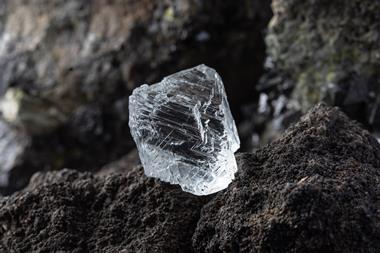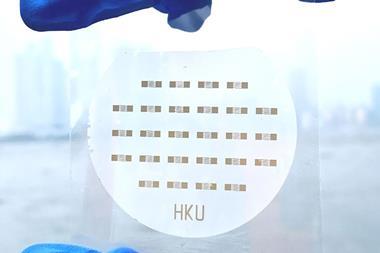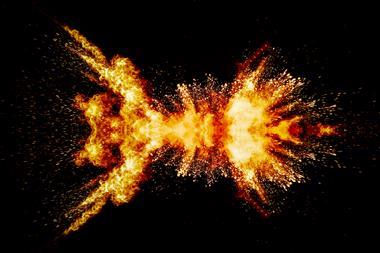Diamond is having a moment: a new type of diamond, that’s both amorphous and crystalline at the same time, has been made by a team of scientists in the US. Meanwhile, amorphous diamonds have been made in bulk by a team in China.

Diamonds are famous for their breathtaking crystallinity, extreme hardness and sparkling beauty. But non-crystalline, amorphous diamond, which doesn’t have the same crystalline regularity in its atomic structure, is even more precious to some scientists because of its potential material properties: it’s ultrahard, has great thermal conductivity and could be tuned to have more as-yet-unknown properties. But until now, only the smallest dust-like particles of amorphous diamond have been produced. Now, two teams working on opposite sides of the world have taken steps that will make it possible to investigate these materials further, and one of those teams has even come up with a new form of diamond.
Howard Sheng at George Mason University, US, and his team made paracrystalline diamond. A paracrystalline material is both amorphous, without any long-range order in its structure, and yet also has pockets of ordered structure in the form of nanocrystallites within the bulk. Until now, paracrystals were a theoretical concept. But by heating and squeezing C60 fullerenes, or buckyballs, to temperatures as high as 1800K and pressures of 30GPa, Sheng’s team found they could make millimetre-sized samples of paracrystalline diamond.1
In the paracrystalline form, a matrix of amorphous diamond has nano-sized crystals that are hexagonal or cubic just like natural diamond scattered throughout it, explains Alfonso San Miguel at the Institute Lumière Matière, Claude Bernard University Lyon 1, France, who wasn’t involved in the work. The nanocrystallites give the amorphous matrix some medium-range order – like a glass – but no long-range order that you would see in a true crystalline material like natural diamond. If the mixtures of these nanocrystallites can be changed at will, then it could mean a wealth of new materials. ‘Potentially they have opened the way to synthesise a huge family of materials depending on the size of those nanocrystallites,’ says San Miguel.
Sheng says that the atomic structure of the paracrystalline diamond is distinct from other well-studied crystalline and amorphous solids, and he is keen to know whether other materials could also be paracrystalline. ‘It is imperative to know whether this paracrystalline state of solids exists in materials other than carbon,’ says Sheng.
Published on the same day is work by Minggyuang Yao at the State Key Laboratory of Superhard Materials at Jilin University, China and colleagues who also used fullerenes to make another version of amorphous diamond in larger quantities than ever before.2 They also used buckyballs, heated them between 450 to 1200°C and under pressures of 20 to 37GPa. This made the buckyballs collapse and polymerise. The resulting millimetre-sized amorphous diamonds were significantly harder than any other diamond material, and also had a very high elastic modulus – a measure of how much stress you can put a material under without it deforming. The team suggests that the hexagonal structure inherited from C60 is responsible for these exceptional properties.
Critical to both new materials is the way the electrons are organised for bonding – a result of orbital hybridisation. The electrons in crystalline diamond’s carbon atoms are sp3 hybridised, allowing each carbon atom to form four bonds. Graphite and the buckyballs used to produce the amorphous diamond, by contrast, are sp2 hybridised and the atoms bond to three others in a hexagonal lattice that can form flat sheets or buckminsterfullerenes.
In both team’s efforts, the amorphous diamonds’ bonding was disordered, but was sp3 hybridised. This sp3 bonding brings with it the extreme hardness that was seen in both teams’ materials – and in crystalline diamond – but the disordered structure means that unlike ordinary diamonds amorphous diamonds won’t shatter.
While both teams used similar synthesis methods, they get two very different materials. ‘This is interesting,’ says San Miguel. ‘Maybe it can allow us to tune the properties.’
References
1 H Tang et al, Nature, 2021, 599, 605 (DOI: 10.1038/s41586-021-04122-w)
2 Y Shang et al, Nature, 2021, 599, 599 (DOI: 10.1038/s41586-021-03882-9)












No comments yet